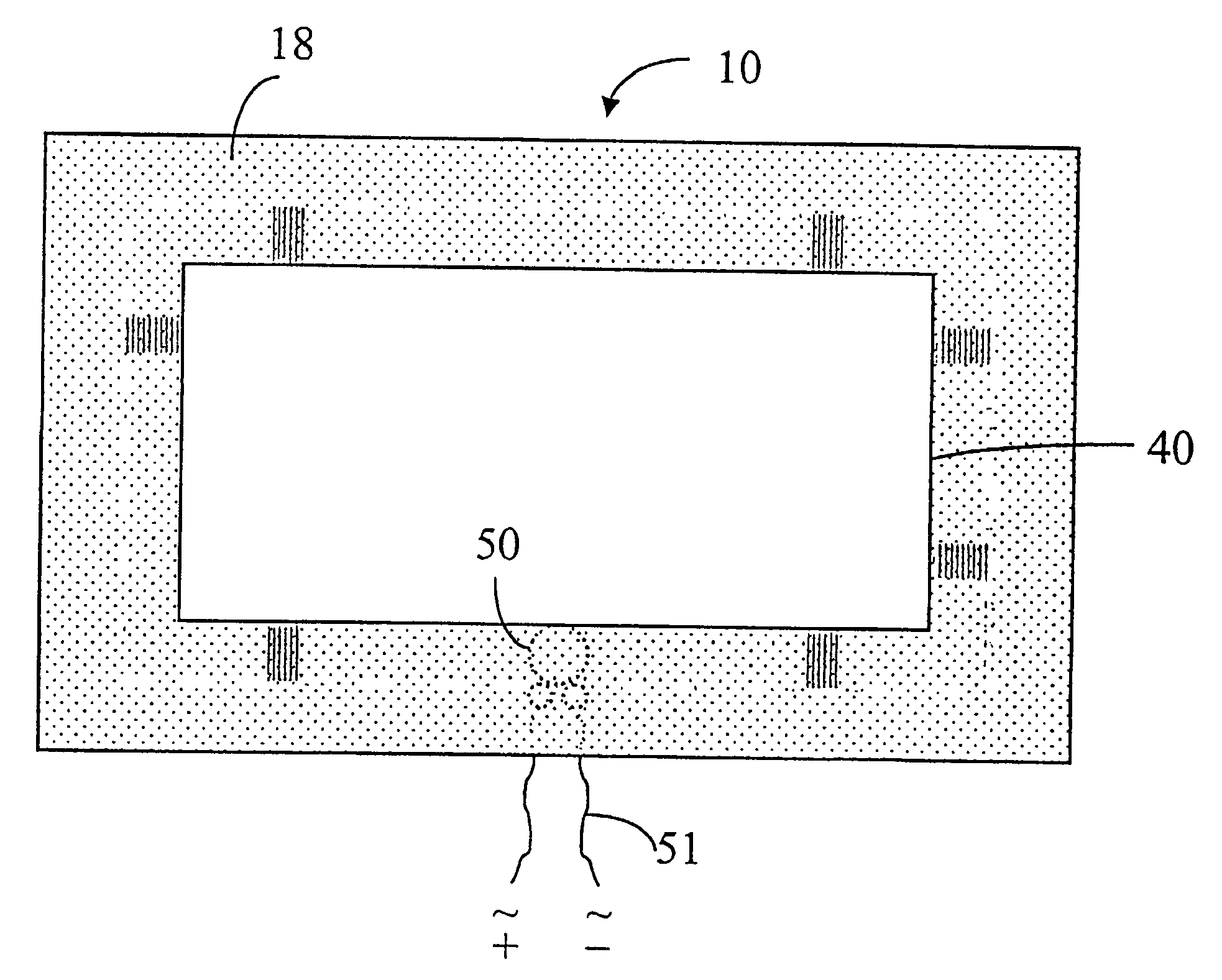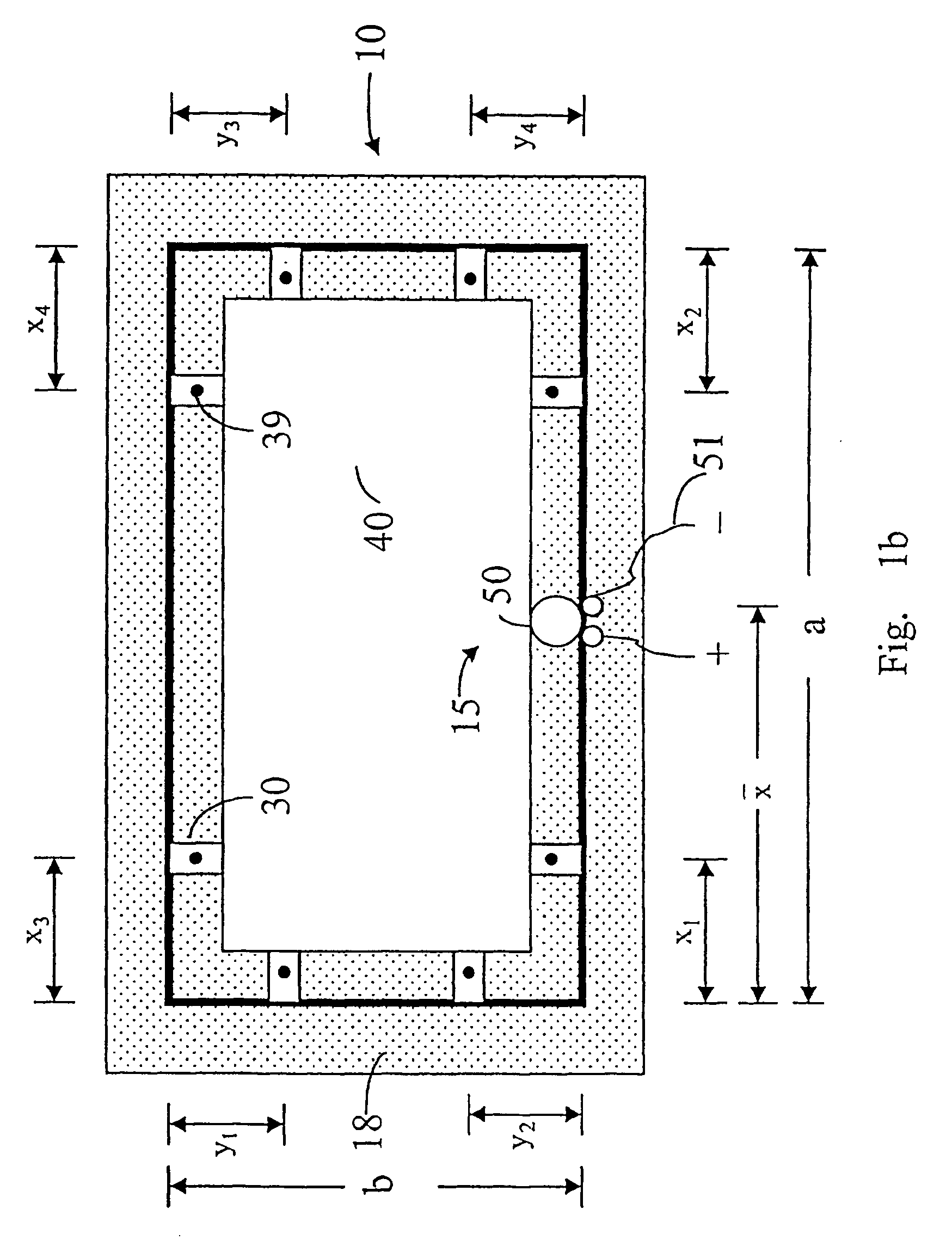Transparent panel-form loudspeaker
a panel-form, loudspeaker technology, applied in the direction of transducer diaphragms, electromechanical transducers, diaphragm construction, etc., can solve the problems of large moving coil drivers, large weight, and limited application of panel-form loudspeakers
- Summary
- Abstract
- Description
- Claims
- Application Information
AI Technical Summary
Benefits of technology
Problems solved by technology
Method used
Image
Examples
Embodiment Construction
[0024] The theoretical background of the proposed method is illustrated as follows.
[0025] The method for the design of the present transparent panel-form loudspeaker is established on the basis of the effective modal parameters identification method which utilizes both the analyses of modal vibration and sound pressure level spectrum in identifying the beneficial modal parameters of the transparent panel radiator for sound radiation. In the effective modal parameters identification method, a vibrating transparent panel is modeled as a surface sound source which displaces air volume at the interface. For an infinitely extended or baffled plate under flexural vibration, the sound pressure radiated from the plate can be evaluated using Rayleigh's first integral. The on-axis far-field sound pressure P is then calculated using the following approximate expression P=-(ρω22π)∫sW0(x,y)ⅇj[β(x,y)-kr]dsr(1)
where ρ is air density, ω is vibrational angular frequency, k is wave number,...
PUM
| Property | Measurement | Unit |
|---|---|---|
| transparent | aaaaa | aaaaa |
| length | aaaaa | aaaaa |
| width | aaaaa | aaaaa |
Abstract
Description
Claims
Application Information
 Login to View More
Login to View More - R&D
- Intellectual Property
- Life Sciences
- Materials
- Tech Scout
- Unparalleled Data Quality
- Higher Quality Content
- 60% Fewer Hallucinations
Browse by: Latest US Patents, China's latest patents, Technical Efficacy Thesaurus, Application Domain, Technology Topic, Popular Technical Reports.
© 2025 PatSnap. All rights reserved.Legal|Privacy policy|Modern Slavery Act Transparency Statement|Sitemap|About US| Contact US: help@patsnap.com



